How to get sponsored on Instagram: A beginner’s guide
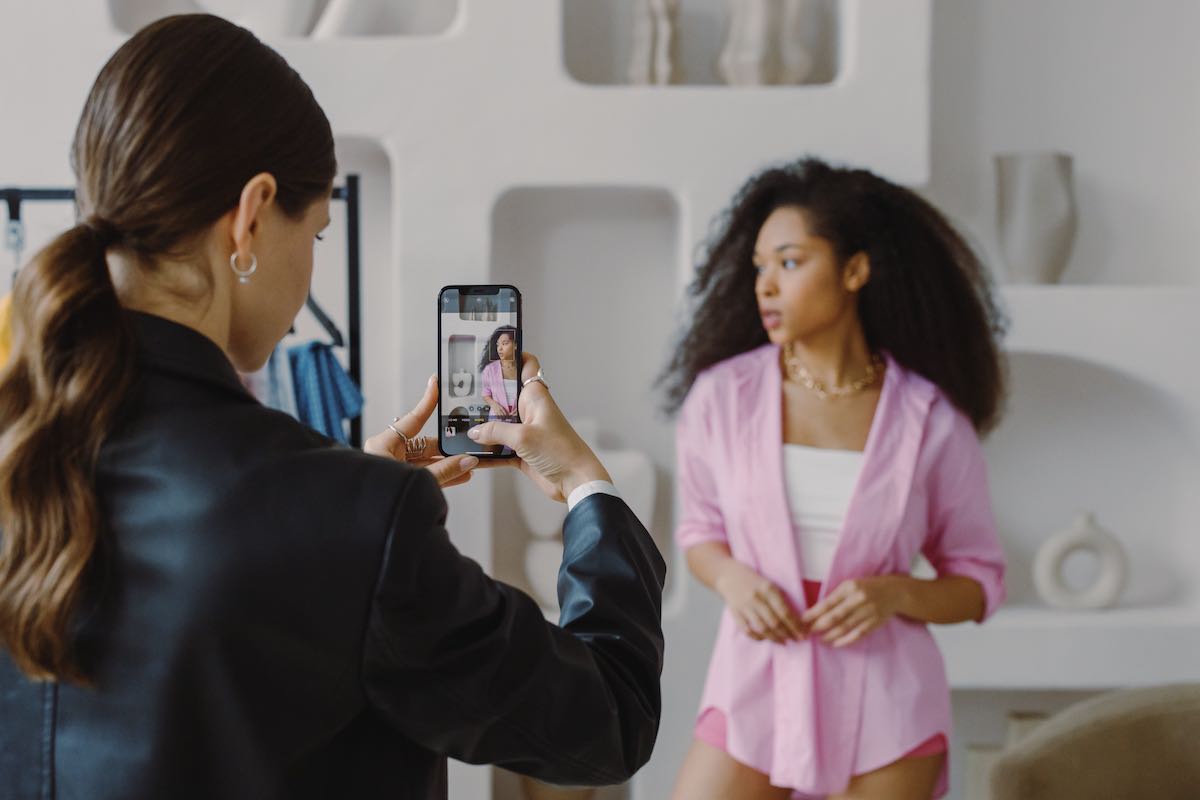

If you’ve spent any time on Instagram, you probably know creators rely on sponsorships to earn extra money. You may also have wondered how to get sponsored on Instagram too.
Instagram is one of the most popular channels for brand sponsorships. A recent report shows most brands choose Instagram as their preferred channel for influencer marketing campaigns. In fact, the influencer industry grew from $1.7 billion in 2016 to $16.4 billion in 2022.
If you’re totally new to this space, we’ll break down everything you need to know about Instagram sponsorships–from types to how to monetize your social media.
Understanding Instagram sponsorships
With Instagram sponsorships, brands pay you to create content to promote their products or services. It’s as simple as that. Companies usually work with influencers who have a personal brand and engaged followers.
If you land a sponsorship, you’ll typically create and share promotional content for sponsored posts to encourage your audience to buy. But it’s important not to lose audience trust or authenticity along the way. To maintain your audience’s trust and the integrity of your account, you should only promote products or services you use and recommend.
There are various ways to market a company on your Instagram:
- Product reviews – Brands send you a product to promote to your followers.
- Collaboration posts – One partner creates a post and invites the other to collaborate. It appears on both Instagram pages, and each party can access post insights.
- Affiliate posts – You promote a product or service and share a special affiliate link on your page. If your audience clicks the link and purchases, you earn a commission.
For example, Teachable has an affiliate program, and partners can earn up to 30% commission.
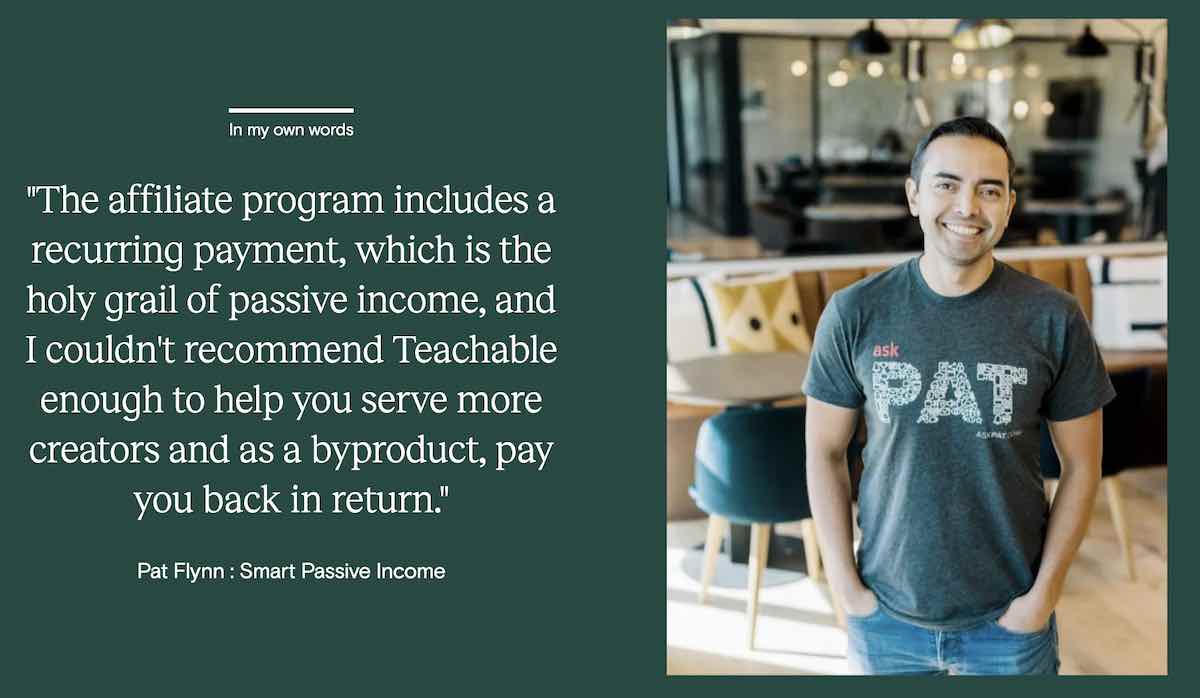

How to make money on Instagram
According to a survey on Instagram income, influencers on the platform make an average of $2,970 monthly. In the survey, micro-influencers (1,000-10,000 followers) made $1,420 monthly. This revenue can come from multiple sources: affiliates, ads, and yes, sponsorships.
When it comes to how to get sponsored on Instagram (and how much you can make), it depends on audience size, engagement rate, and niche.
To make money on Instagram, you can charge brand sponsors different rates based on the type of Instagram content you create. For example, the most common types are:
- Stories
- Posts
- Reels
Let’s look at each in more detail below.
Sponsored Stories
Instagram stories are posts visible for 24 hours. They’re less formal than standard posts and help you connect with and engage your target audience.
If you create Instagram Story ads, you can choose the length of your campaign for longer visibility.
Tips for creating sponsored stories:
- Find templates on Canva or record your own video.
- Use a hook to capture your audience’s attention immediately.
- Opt for videos over pictures for engaging content.
- Use sound for optimal value.
- Include text for those who have their sound off.
- Add a call to action–your affiliate link or tag to your sponsored partner’s page.
- Share a visible ad disclosure.
To avoid flooding your feed with content that seems salesy, share one to two posts and stories at a time. Also, make sure to disclose that your sponsored content is an ad.
In this example, a shopping Instagram page partners with Volvo. Each post includes the paid partnership label to disclose the ad.
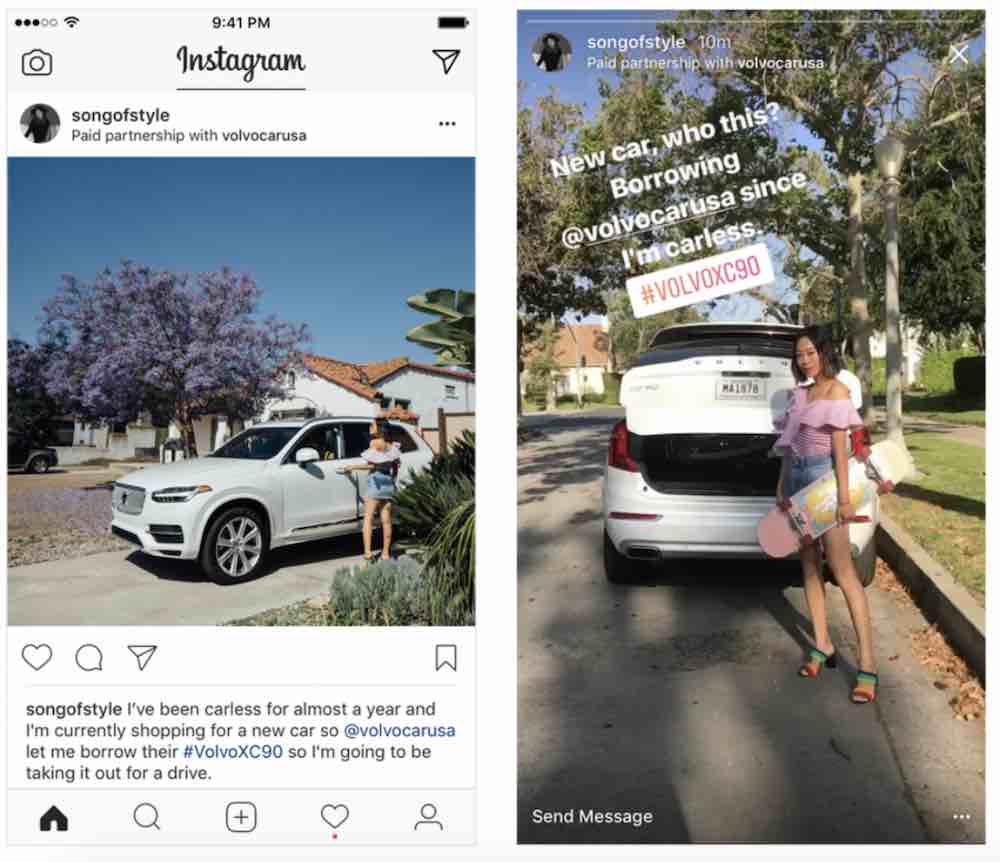

Sponsored Reels
Instagram Reels are clips of up to 15 seconds set to music or voice-over. Unlike stories, Reels are viewable by all users and remain on your feed. Brands get 40% more engagement with Reels than with other content formats.
Reels are also Instagram’s fastest-growing feature, with ads reaching up to 675.3 million users. Many Instagram influencers charge more for Reels because of their high reach and engagement rates.
You can personalize your Reels with multiple videos, filters, text, and stickers or even partner with other influencers or brands.
Like the post below, you can create a collaboration Reel on your and the brand’s Instagram. Some brands might want you to boost the Reel as an ad for more reach. To do this, you’ll set a daily budget, which you should include in your rate or have your sponsorship partner cover.
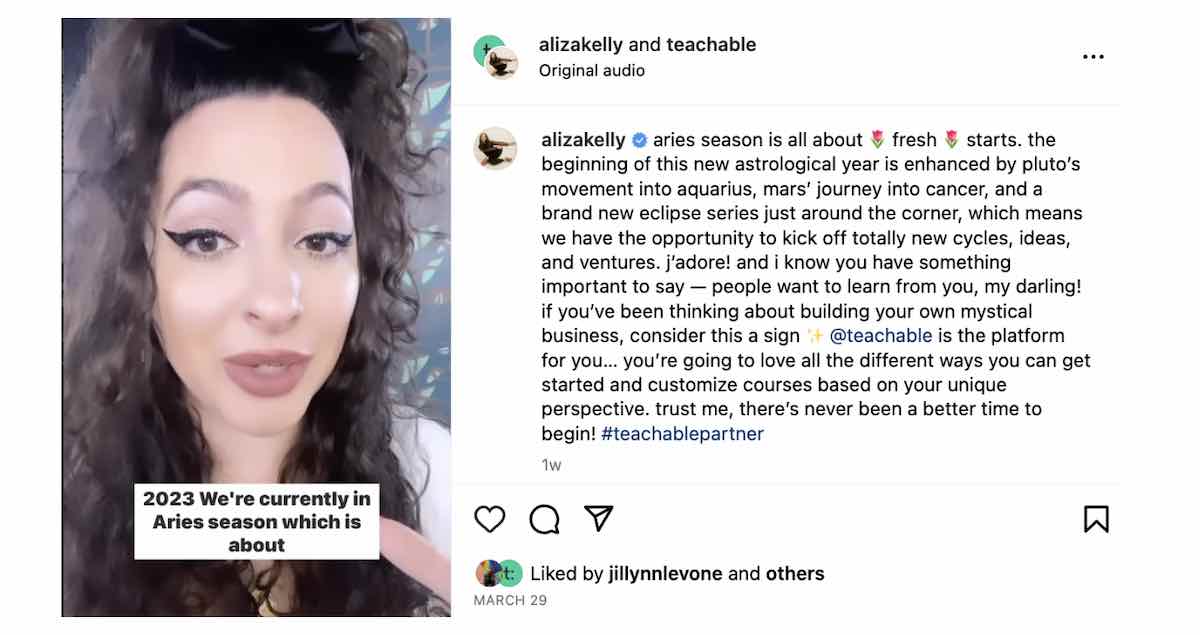

Sponsored static posts
Static posts are single images and Instagram’s original sharing option. While Reels can get engagement faster, their reach often stops within a few days. Meanwhile, static posts stay in your feed and offer evergreen marketing.
When creating static sponsored posts, include:
- High-quality images
- Skimmable captions with short paragraphs and lists
- Calls to action such as “DM me to learn more” or “see link in bio to purchase”
- Hashtags to reach your target audience
In the sponsored post below, Naomi Genota partners with Teachable to market a challenge for creators. This content relates to her and Teachable’s target audience. She discloses that it’s an ad, as the Federal Trade Commission (FTC) requires, and uses the “paid partnership” Instagram feature.
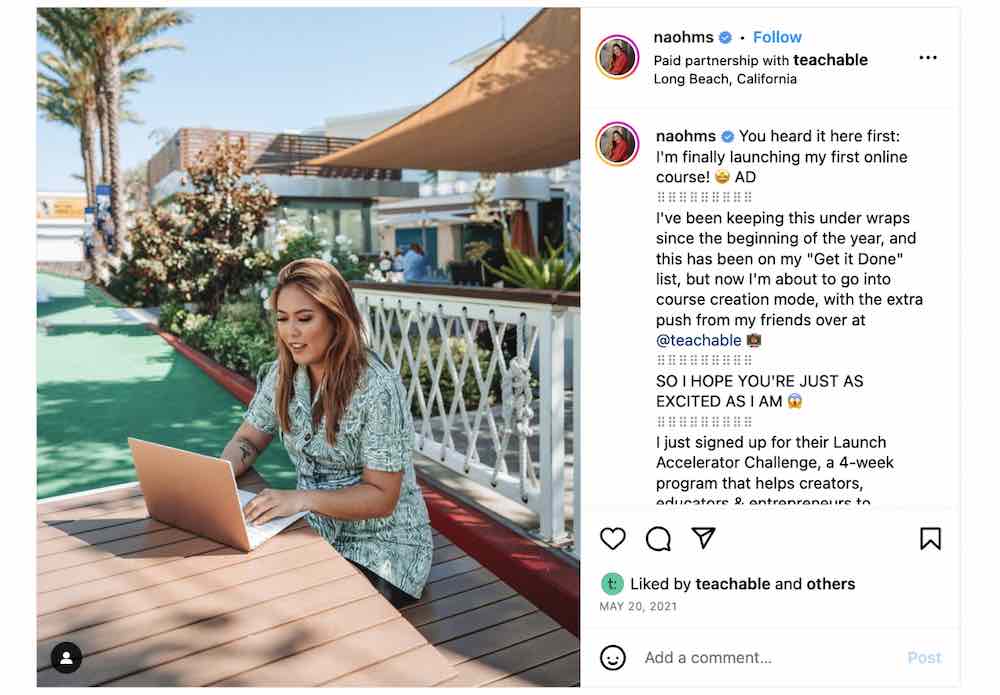

Sponsored content can be a profitable way to make money online. However, many Instagram creators increase their earning potential by diversifying their income sources. In addition to Instagram, you might create an online course or sell digital downloads. For example, some travel influencers create courses to teach others how to plan affordable vacations.
How to get sponsored on Instagram
There are several steps to getting sponsored on Instagram, including improving your profile, gaining followers, and connecting with potential partners. We’ve broken it down further below.
1. Build a strong Instagram profile
When it comes to how to get sponsored on Instagram, you have to start with a strong profile. This helps you attract your target audience and sponsorship opportunities.
Your Instagram profile should include:
- A cohesive brand image and aesthetic – Pick a few colors to use across all your posts and a theme (minimal, colorful, boho, dark).
- An informative, actionable bio – Your bio is the first thing people will see. Use it like an elevator pitch and share who you are, your contact information, and a link. Include keywords relevant to your niche.
- An on-brand profile picture – Choose a high-quality image that aligns with your brand.
- Public access – It’s easier to grow your account if it’s public because anyone can view your posts and follow you.
Teachable creator Sade Kelly helps fellow entrepreneurs with time management. Her bio is a precise representation of her work and who she helps.
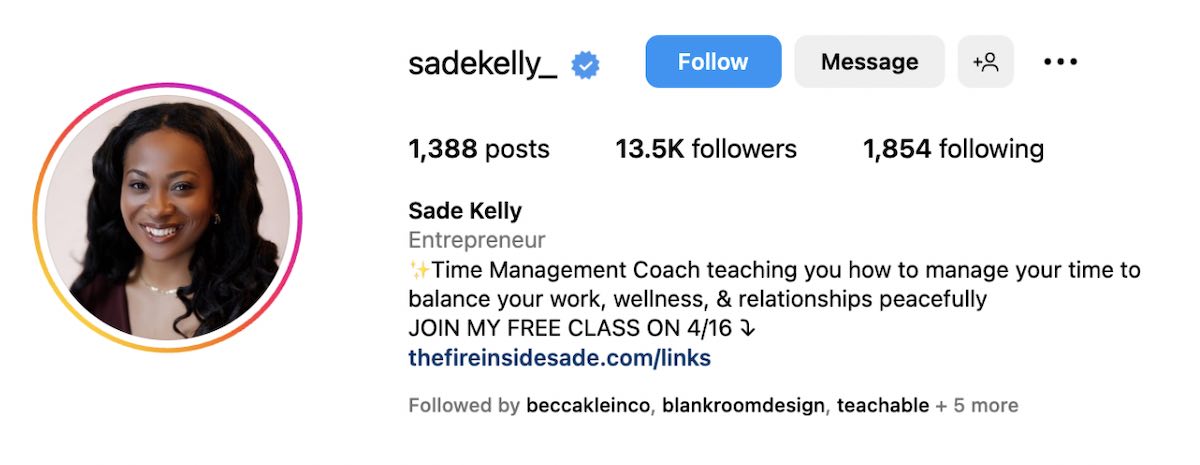

2. Grow your following organically
The best way to succeed on Instagram is to grow an organic following of people who engage with your content.
You don’t need a massive following to get sponsored on Instagram. However, it’s best to have at least 1,000 followers before you start pitching.
Here’s how you can grow an organic following and increase your engagement rate:
- Define your niche – A specific niche helps you reach your target audience. For example, Homestead Brooklyn’s niche is plants.
- Post valuable content consistently – There are more than 500,000 active Instagram influencers. You need consistent, high-quality content to stand out.
- Utilize stories – Instagram stories are a more informal way to engage your audience.
- Engage with your audience – Share polls, use interactive stickers, and reply to comments and messages.
- Build relationships with creators in the space – Relationships with influencers help you reach more people and leverage multiple followings.
- Drive traffic to your Instagram from other platforms – Use courses, a blog, and Pinterest to reach more people.
3. Use relevant hashtags and strong captions
Hashtags and strong captions help you reach and engage your target audience, especially when using relevant keywords.
Search for hashtags on Instagram and see the number of followers and posts. Opt for a mix of hashtags with a medium to high follower count.
You can use up to 30 tags per post, but recent reports suggest using 3-5. For example, a fashion influencer might use #fashionblogger, #fashiongoals, and #style. You can also use the words and phrases as keywords in your caption.
Write captions that include:
- A compelling hook
- Storytelling
- Informative and engaging content
- Short sentences and paragraphs
- Calls to action that direct the reader on what to do next
For help writing captions, you can also use an Instagram caption generator or even ChatGPT.
4. Get to know your audience
Use the power of Instagram’s analytics to learn more about your audience and measure the impact of your posts. This information can also help you determine which brands are the best partners for you.
Your Instagram account insights show you:
- How many accounts you reach and engage
- Your follower growth
- Follower location, gender, and age range
- Post interactions
The more you know about your audience, the easier it is to decide which brands to work with. You’ll also share these insights when pitching potential sponsors.
5. Create a media kit
Every successful Instagram influencer needs a media kit or portfolio. This is how you pitch to brands and show them why they should work with you.
You also don’t need to be a graphic designer to create a professional media kit. Canva offers various easy-to-use templates for media kits.
Here’s what to include in your media kit:
- Content niche
- Audience demographics
- Case studies for past brand sponsorships
- Follower count
- Engagement numbers
- Links to your website, blog, or other social channels
If you have a Teachable course, you can also include it in your media kit to boost your credibility and show you’re able to attract paying customers. For example, Mallory Rowan includes a snapshot of her brand collaborations and the number of students enrolled in her courses.
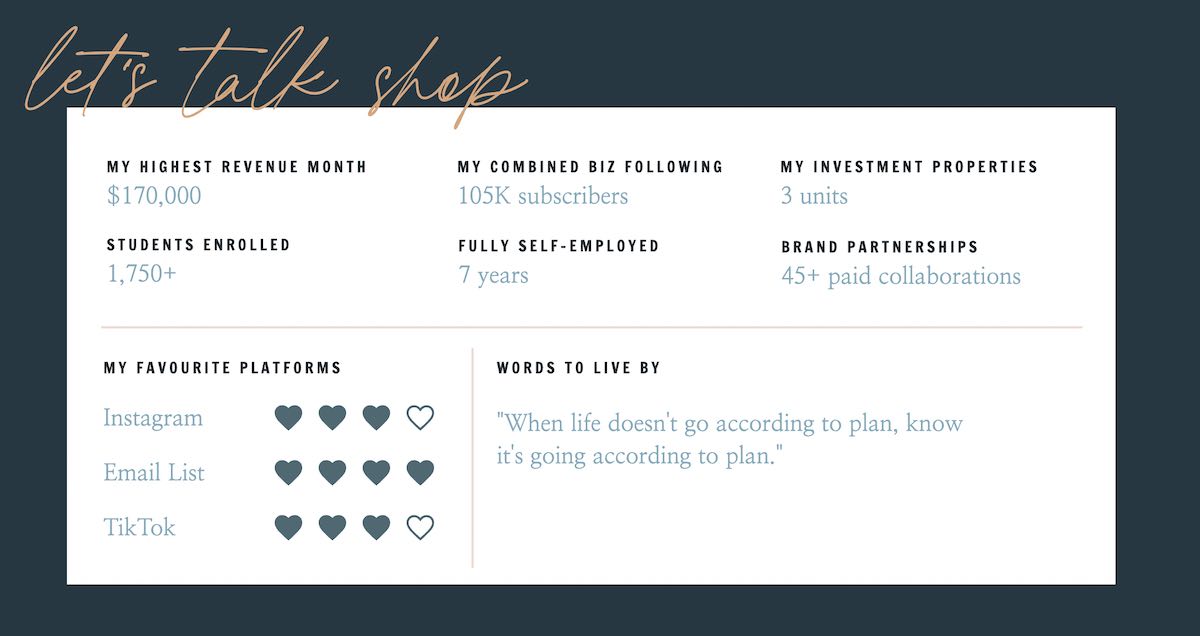

6. Identify and connect with potential sponsors
It’s rare for pitch opportunities to fall in your lap, especially when you’re just starting. For the most success, reach out to brands and share your media kit and interest in working together.
Start by creating a list of companies you’d like as brand partners. Make sure the brand and its products or services relate to your audience. To identify suitable sponsorships, you can start by looking at other influencers in your niche and seeing which brands they’ve worked with.
Here are more tips for finding and pitching potential sponsors:
- See if the brand’s website has partnership information. If not, use LinkedIn or Hunter to find the contact information for someone in marketing.
- You can also use an influencer agency like Whalar to find sponsorships.
- As a new influencer, pitch smaller brands before moving on to larger ones.
- Write an email to introduce yourself and share your media kit. Include a call to action (i.e., book a call to discuss sponsorship).
- If you use a template for your pitch email, add personal touches. Tell the brand why you want to work with them and share why you’d be a good partner.
- If you don’t get a reply within a few days, send a brief follow-up email.
- Send pitches regularly, and try not to get discouraged if everyone doesn’t reply.
7. Negotiate rates and terms of the sponsorship
Before partnering with a brand, agreeing on rates and terms is essential. It’s usually best to schedule a call to discuss details.
When negotiating rates and terms, remember:
- Sponsored content is valuable because you’re helping a brand reach more people and boost online sales. Negotiating or saying “no” is okay if you disagree with the offer.
- Set clear boundaries and expectations from the start. Discuss the scope of work, term length, payment terms, and exclusivity.
- Make your agreement official with a contract and non-disclosure agreement. If a company shares its contract with you, make sure it aligns with your terms before signing. If not, you can ask them to update it.
8. Disclose sponsorships to your audience
According to the FTC, social media influencers must disclose sponsorships. Your disclosure should be easy for your audience to see and understand. Include it in all partnership stories, Reels, and posts. If your content is a video, your disclosure should be visible via text.
Disclose sponsorships by using words like “advertisement,” “ad,” and “sponsored” in your captions or video texts. Brands might also ask you to use hashtags like:
- #ad
- #sponsored
- #affiliate
Instagram also has a feature to add a “paid partnership” label to your post to disclose sponsorships. You can see this on this post by Nancy Badillo, a Teachable partner:
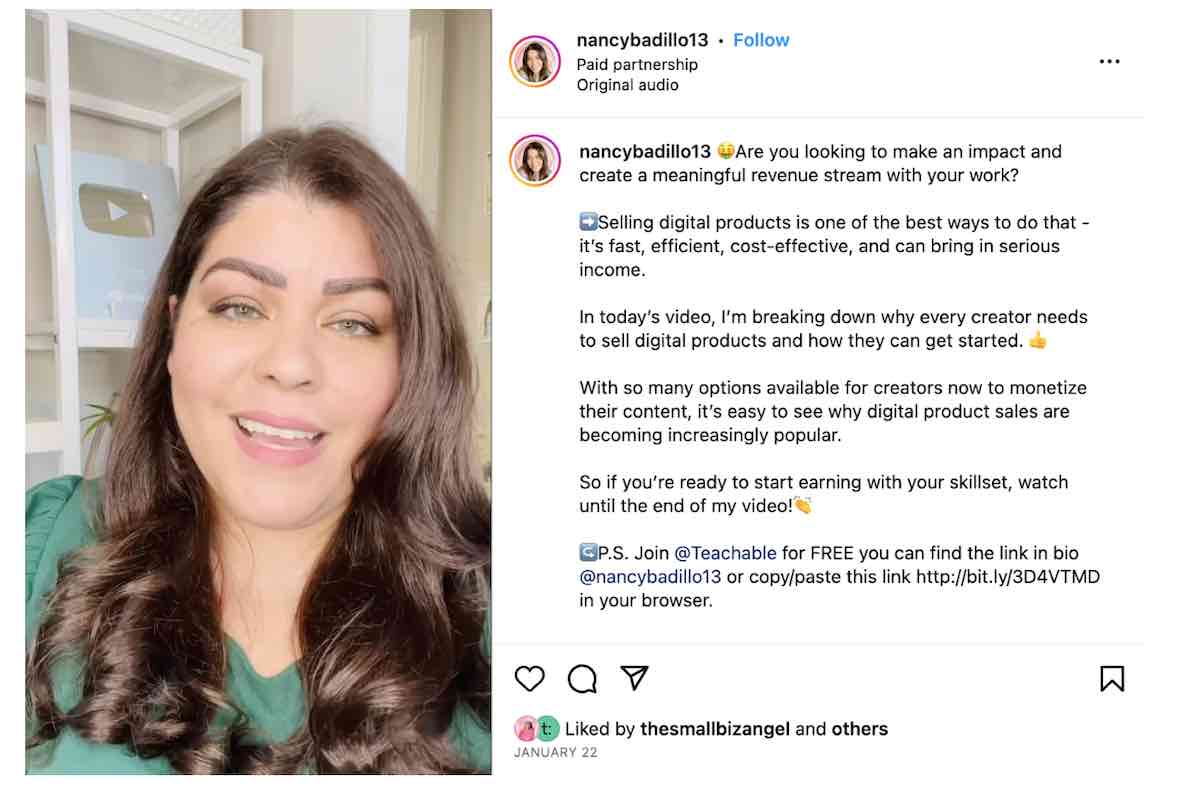

9. Build relationships with sponsors
Developing relationships with sponsors is an excellent way to grow your success. Not only is retaining existing sponsors easier than finding new ones, but it can lead to more opportunities. You can also increase your rates as you build relationships with your sponsorship partners.
Here are ways you can maintain good relationships with partners:
- Adhere to your contract agreement
- Provide consistent and high-quality content
- Share new post ideas
- Communicate effectively and professionally
Grow your brand beyond Instagram with Teachable
You’re now armed with the same strategies top influencers use to get sponsored on Instagram. But even if you land a brand sponsorship, remember that most online creators leverage other platforms to diversify their income streams and increase earning potential.
Many creators earn regular income by selling digital products and online courses related to their niche. For example, if your target market is people who like to cook, you might create courses about different recipes.
Teachable makes creating and selling courses easy and affordable with a codeless platform and various pricing plans.
FAQs
Below, we’ll answer common questions about how to get sponsored on Instagram.
Can I work with brands if I have a small following?
Yes, there are plenty of opportunities for Instagram sponsorships for small accounts. It’s all about positioning yourself as an expert with an engaged audience who seeks recommendations from you.
Smaller accounts, known as nano-influencers or micro-influencers, have 1,000-50,000 followers. Companies like working with nano and micro-influencers with a specific niche that aligns with their brand. A high engagement rate helps too.
According to a recent study, nano and micro-influencers can earn up to $500 per post.
How much should I charge for sponsored posts on Instagram?
A good starting point for sponsored Instagram posts is $10 per 1,000 followers. So if you have 50,000 followers, your rate for a sponsored post is $500.
However, every Instagram influencer doesn’t follow this formula. Your rate can vary depending on the deliverable type, timeline, and exclusivity terms.
You might charge more for Reels than stories and static posts. Reels cost more since they often reach more people and take longer to create.
You can also have higher rates for rushed work or brands with an exclusivity clause, where they ask you not to work with competitors.